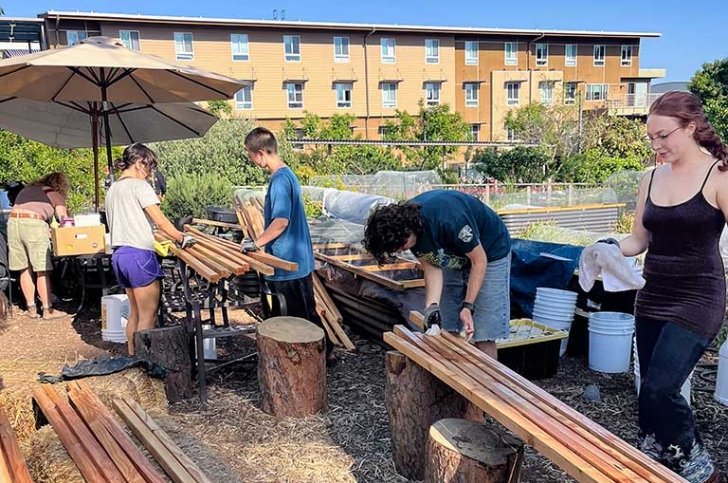The Future of Farming Comes to SoCal
California Agriculture Deputy Secretary Virginia Jameson Delivers Keynote at Launch of Region’s First Agrivoltaics Installation
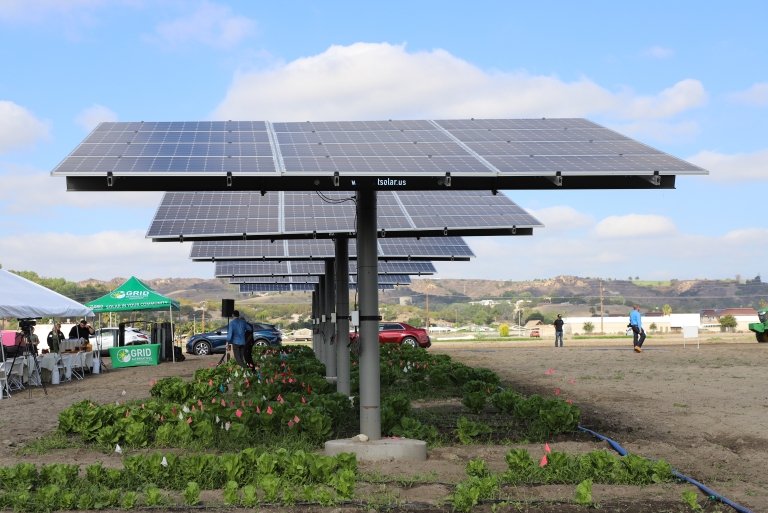
A groundbreaking collaboration among Pitzer College, California State Polytechnic University, Pomona (Cal Poly Pomona), and the Foundation for Food and Agriculture Research (FFAR) has resulted in the creation of Southern California’s first agrivoltaics research site—a pioneering effort that combines solar energy production with crop development on the same land.
The new installation, which was unveiled Thursday at Cal Poly Pomona’s Spadra Farm, marks an important milestone in the development of sustainable agriculture and clean energy. The site features six arrays of solar panels mounted above a field of commercially grown romaine lettuce, demonstrating how farmland can serve dual purposes: producing both food and renewable energy.
Virginia Jameson, who serves as deputy secretary for climate and working lands for California’s Department of Food and Agriculture, delivered keynote remarks at the event. She celebrated the fact that the installation is the first of its kind in Southern California and emphasized its potential influence in shaping the future of farming statewide.
“This is the kind of event that really gives me hope for the future of agriculture in California,” she said. “This project is a microcosm of what farmers do every day. They wake up with the sun and try to figure out ways to do things better.”
Funded through a $1.8 million grant from the Foundation for Food and Agriculture Research, the project reflects California’s ongoing leadership in climate innovation and sustainable land management. The installation also marks the second major push by the Conservancy in the past two years to provide a response to climate challenges; the first, SoCal Earth, which is an online digital tool accessible to the public, provides updated data on the impacts of industrial development and pollution on Southland communities (it was unveiled last fall).
This installation marks Southern California’s first commercial crop-based agrivoltaics site. While several agrivoltaic setups exist elsewhere in the state, most involve livestock grazing or pollinator habitats, not crops.
Jameson noted how 90 percent of California’s farms are family-owned, with many facing mounting economic, political, and international challenges. She said agrivoltaics provides a promising response to help these farms stay afloat.
“Projects like this prove the workability of a concept and give us concrete paths for further improvement and implementation of that concept,” she said. “Real farms can benefit from this.”
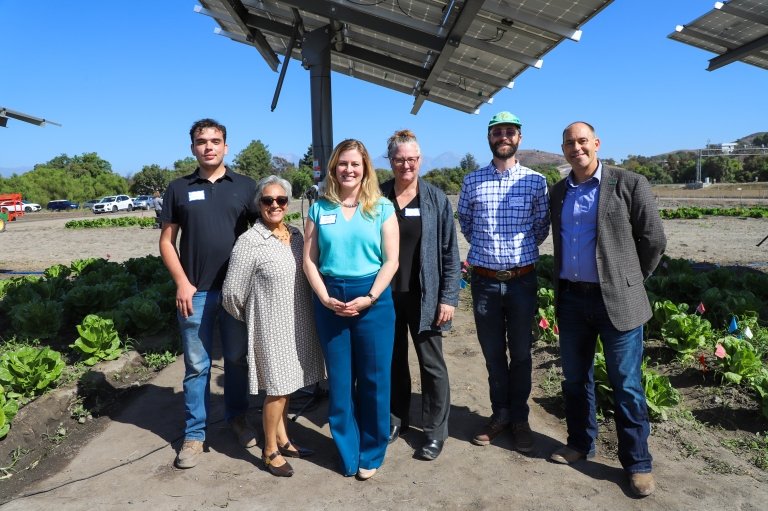
“Welcome to Our Classroom”
The event opened with an Indigenous land acknowledgment presented in words and song by Josh Andujo and Carla Marie Muñoz. Additional speakers included Susan Phillips, director of Pitzer’s Robert Redford Conservancy for Southern California Sustainability; Aaron Fox, associate professor of plant science at Cal Poly Pomona; Richard Connelly, a Cal Poly Pomona plant science undergraduate; Rose Olivas, Redford Conservancy fellow and co-principal investigator of the project; and Ethan Orr, dean of Cal Poly Pomona’s Huntley College of Agriculture.
“I want to welcome you to our classroom,” Orr told the audience. “The way we see the land, the way we treat it—really speaks to who we are.”
The event also featured a ribbon-cutting ceremony followed by a tour and demonstration of the installation, which stands on a quarter-acre of farmland and includes the six solar arrays (each bearing 12 monofacial solar panels) and two 220-pound batteries that store the energy produced. The system generates enough electricity to provide an attractive and tangible alternative to fossil fuels.
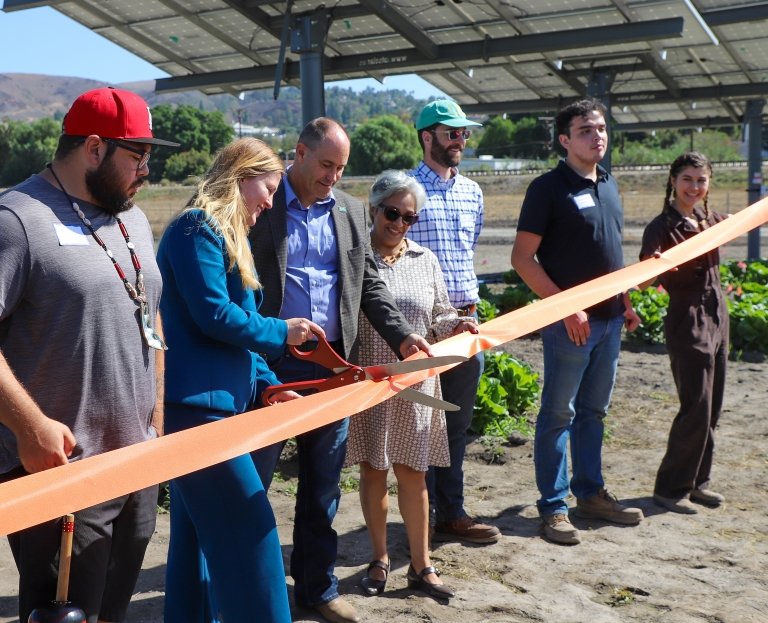
Challenging Regional Misconceptions
To study the effects of panel shading on the lettuce, researchers planted a parallel strip of the romaine crop in the sun as a control. The faculty-student research team hopes to use their data to inform future water conservation and energy-efficiency practices across the state and, in the process, encourage more policymakers to make this option available to farmers in their communities.
Representatives of State Senator Stephen C. Padilla and Assemblymember Michelle Rodriguez presented certificates of acknowledgment, with additional commendations forthcoming from State Senators Bob Archuleta and Jerry McNerney, all recognizing the installation as a model of policy-driven environmental progress.
As climate pressures mount, agrivoltaics offers a pathway to energy resilience, water conservation, and land-use efficiency. The Spadra Farm project showcases how California’s academic, agricultural, and policy communities are working together on a vision of a more sustainable future.
The Redford Conservancy’s Phillips noted that the project also aims to reshape perceptions of the Inland Empire.
“There’s a misconception of the IE as the land of cheap dirt,” Phillips said. “We wanted to flip that idea on its head. We wanted people to see its richness. This project is a direct outcome of that desire.”
Learn more about Pitzer and agrivoltaics in Southern California
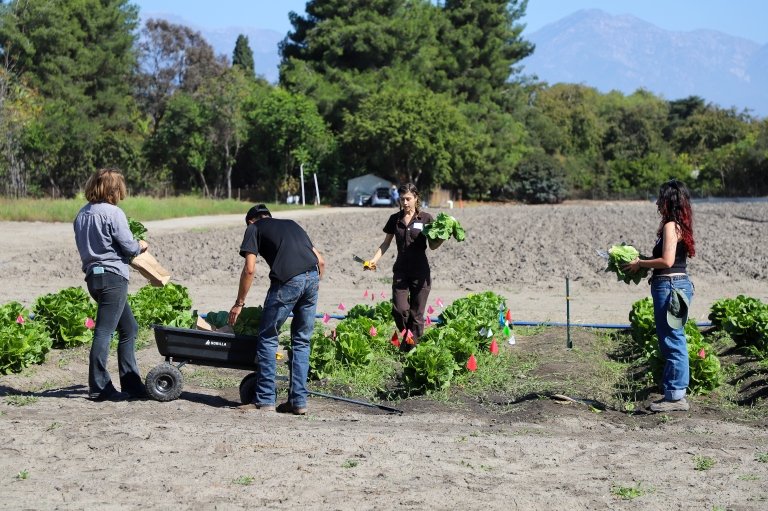
Farm manager Emily Kuhn '22 (second from right) and other members of her team harvest romaine lettuce from the crop that is being used as a control.
News Information
Published
Organization
- Robert Redford Conservancy for Southern California Sustainability

